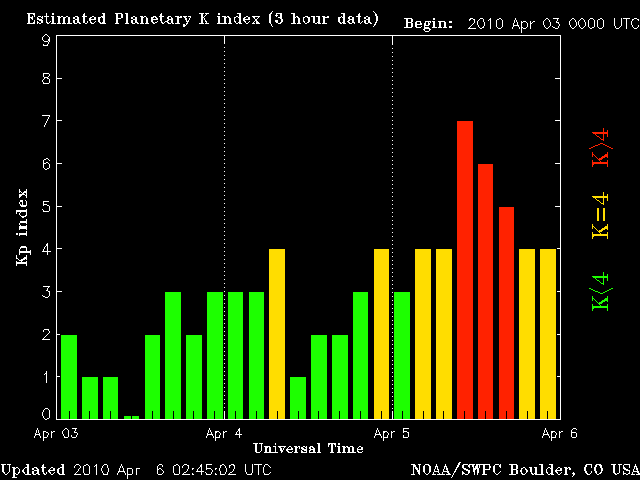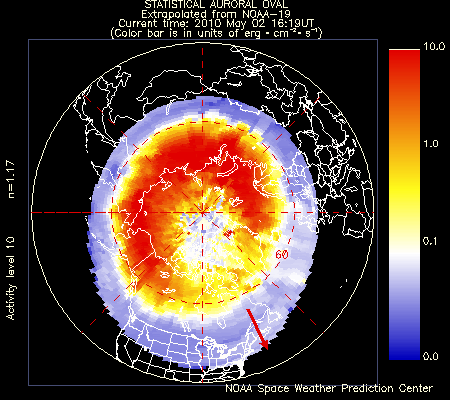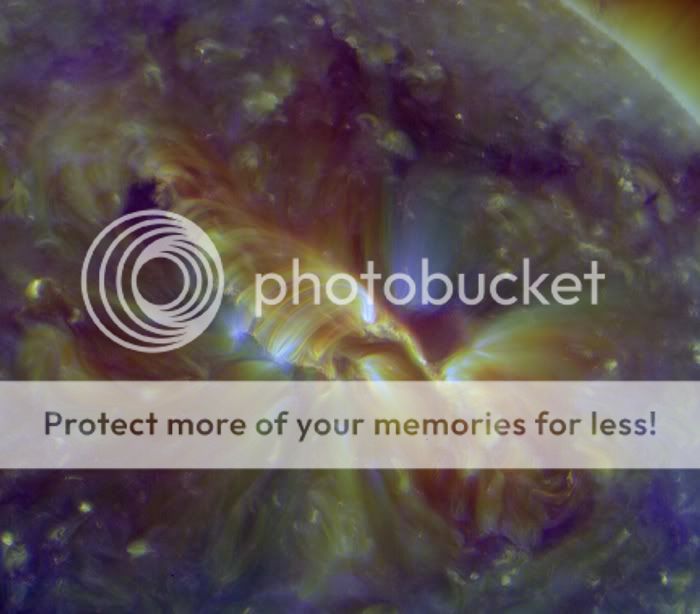E
EarthlingX
Guest
Sun storm !
http://www.n3kl.org/sun/noaa.html :

Active regions on 2010 04 06 (Solar monitor) :
(edit 2010 april 12)
Last events, from SolarSoft Latest Events Archive
update ( 07:15 GMT )
static image from dynamic data at http://www.n3kl.org/sun/noaa.html :

I think that something going away from Sun can be seen on these images :
http://www.solarmonitor.org/ : 2010 04 05
EIT 195Å 20100404 23:36

I checked :
http://sohodata.nascom.nasa.gov/cgi-bin ... length=195
and nope, that was not it.
http://www.n3kl.org/sun/noaa.html :

Active regions on 2010 04 06 (Solar monitor) :
(edit 2010 april 12)
Last events, from SolarSoft Latest Events Archive
- 3-Apr-2010 18:24
- 4-Apr-2010 09:48
- 5-Apr-2010 09:45
- 6-Apr-2010 09:47
- 7-Apr-2010 09:48
- 8-Apr-2010 22:08
update ( 07:15 GMT )
static image from dynamic data at http://www.n3kl.org/sun/noaa.html :

I think that something going away from Sun can be seen on these images :
http://www.solarmonitor.org/ : 2010 04 05
EIT 195Å 20100404 23:36

I checked :
http://sohodata.nascom.nasa.gov/cgi-bin ... length=195
and nope, that was not it.
































